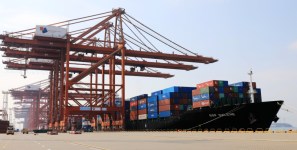Could 2017 Be The Year of Automation in the Supply Chain?
Way back in 2012, Tacocopter—a Silicon Valley startup—came up with a simple but powerful idea: automated taco delivery. Rather than delivery being made by a person to an address, Tacocopter promised to deliver fast-food by unmanned drone, via an app, to a GPS location on your phone.
So what happened? Why is it that, four years later, we’re still ordering tacos like it’s 1995?
While Tacocopter sounds like a great idea, the legal and logistical problems that held it back in 2012 still exist. As a result, the service has been stuck in its “beta phase” for four whole years.
The biggest issue facing Tacocopter is to do with FAA safety regulations, which prevent unmanned drones being used for legal purposes. This one FAA regulation underlines the problem facing automation in general: it isn’t safe enough.
Automation in the supply chain and the Internet of Thing are quite old ideas, with vlogger CGP Grey talking about automation in detail way back in 2014 and the Internet of Things being coined in 1999. The latter describes a world where everything is connected (streetlamps, vacuum cleaners, cars, and phones) in the same way that computers are connected to each other now. Put these two ideas together and you have a supply chain where the bulk of the work is done by unmanned drones, self-driving cars, and other automated machines. All of them would talk to others, just like a computer talks to other computers on the internet, and all of them would be operated by a single app.
While all of this sounds revolutionary, none of this has actually happened yet. It’s been two years since CGP Grey’s video and 17 years since Kevin Ashton first described the Internet of Things. So why will 2017 be any different?
Times are changing, and the movement towards automation in the supply chain is becoming stronger. After all, while the idea of some brand new Silicon Valley startup promising to revolutionize the way we get fast food delivered seems laughable, it’s a lot less laughable when one of the biggest tech companies in the world promises the exact same thing.
And that is exactly what’s happening. Alphabet, Google’s parent company and therefore one of the biggest tech businesses in the world, is promising a future where Chipotle Burritos will be ordered via app and delivered via unmanned drone to a GPS location. When one of the biggest businesses in the world gets behind something, it’s time to start taking it seriously.
And it’s not just one enormous tech company getting behind the idea. Amazon is describing their unmanned drones as “a future delivery system” which will be able to bring products to their customers in 30 minutes or less — at least according to their estimates.
Then you have self-driving cars and the increasingly ambitious predictions for when these will be road legal. Ford claims 2021, Google claims 2020, Baidu claims 2019, and Elon Musk claims 2017.
Even if Musk’s claims are wildly optimistic, 2017 could still be the year that automation in the supply chain begins to take off. A radar tracking system on unmanned drones is a modification being developed by Echodyne which aims to assuage those who worry about the safety of delivery by unmanned drone.
All of this will likely affect the transport side of the supply chain, but many other elements of the supply chain could be affected by automation as well. Back in 2015, the notion of pallet racking inspections in warehouses by unmanned drone was an idea proposed at the SEMA safety conference. As with delivery by unmanned drones, the idea has yet to come to fruition. However, as with delivery by unmanned drones, advances in technology such as a radar tracking systems could make all of this a reality.
2017 might be the year of automation in the supply chain, but it might also be 2018, 2019, or 2020. The fact is that these changes will likely happen in increments. What we do know is that the trend towards automation in the supply chain is strong and is being backed by a wide range of industries. It’s going to happen; it’s all just a question of when.
Justin O’Sullivan is a racking inspection expert and the owner of Storage Equipment Experts. His business offers a number of racking inspections services including a free warehouse racking inspection template.





Leave a Reply